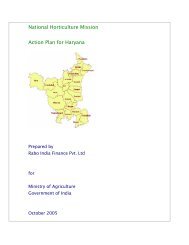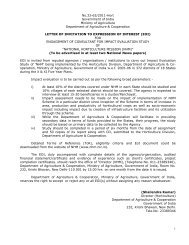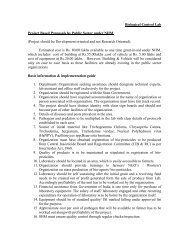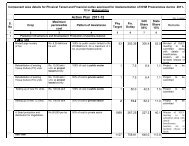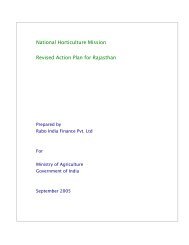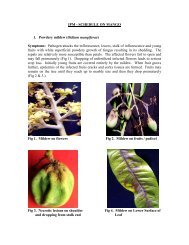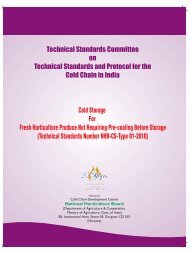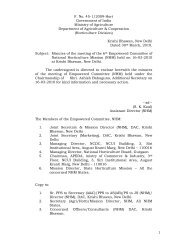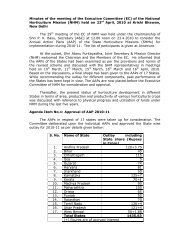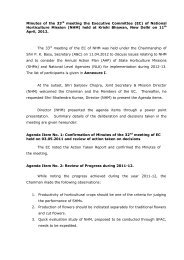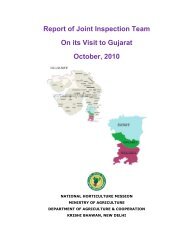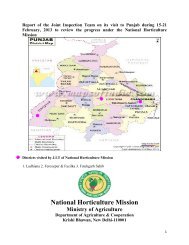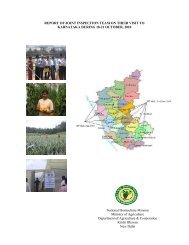IPM SCHEDULE FOR AONLA PESTS National Horticulture Mission
IPM SCHEDULE FOR AONLA PESTS National Horticulture Mission
IPM SCHEDULE FOR AONLA PESTS National Horticulture Mission
You also want an ePaper? Increase the reach of your titles
YUMPU automatically turns print PDFs into web optimized ePapers that Google loves.
dark brown to black and neighbouring spots coalesce. The central portions of the<br />
infected tissues become soft and pulpy.<br />
Management<br />
One spraying of carbendazim (0.1%) should be done 15 days prior to fruit<br />
harvest.<br />
Harvesting should be done very carefully to avoid any injury to the fruits.<br />
Fruits should be stored in clean containers.<br />
Full sanitary measures should be adopted during storage and transit.<br />
Sanitary conditions in storage should be maintained.<br />
Treatment of fruits with borax (0.5%) or sodium chloride (1%) checks the fruit<br />
rots.<br />
13. Internal necrosis (Physiological)<br />
Symptoms<br />
The symptom starts with the browning of the innermost part of mesocarpic tissue<br />
at the time of endocarp hardening and extends towards the epicarp resulting into<br />
brownish black appearance of the flesh. In case of severe incidence, these black spots<br />
become corky and gummy pockets develop (Fig 14).<br />
Fig. 14. Internal necrosis<br />
Management<br />
Combined spray of zinc sulphate (0.4%) + copper sulphate (0.4%) and borax<br />
(0.4%) during September-October has been found effective.<br />
Spray of 0.5 to 0.6% borax in the month of September-October.<br />
Resistant cvs like Chakaiya, NA6 & NA-7 should be planted.



